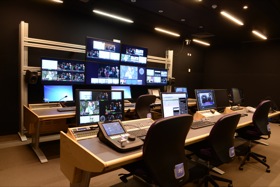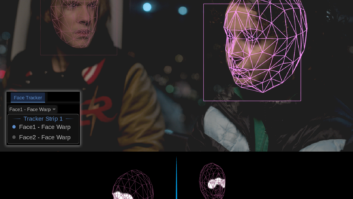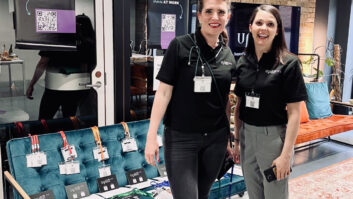
When most film schools need an upgrade in technology, they might decide to buy a camera or two or splurge on a new audio desk. Dublin’s Dun Laoghaire Institute of Art, Design and Technology (IADT) pulled out all the stops and employed broadcast services company Gearhouse to install a full HD studio that is the top facility of its kind in the country.
Opened in a ceremony last month, Gearhouse announced the project at IBC2013 in September. Working with an educational institution presented challenges very different from working with a seasoned broadcaster. The facility had been six years in the planning. One of IADT’s stated goals was that the new studios be useable in downtime for real live HD television productions, so that in addition to providing facilities for students, it could be rented to outside production companies.
“In the original specification, IADT were looking for a lot of bang for their buck,” says Gearhouse sales manager Kevin Fitzgerald. “The key focus was to make the system useable in both a real, live environment and also be able to facilitate education as well. That in itself provided quite a big challenge.”
IADT’s facility is purpose-built, put together by Gearhouse from the ground up. There are two studios – Studio One is the larger of the two, Studio Two features a full virtual studio with greenscreen area. The studio workflow also had to interface effectively with some of the school’s already existing equipment. The school also had two radio studios that were moved to be in the same building as the new TV studios, which Gearhouse also helped to incorporate.
The entire installation, from beginning to the last month’s opening, took only10 weeks. The two studios were equipped with five Hitachi SK-HD1200 multi-format 1080p/3G HDTV broadcast cameras channels, with with Fujinon HA23 x 7.3BERD HD studio lenses.
The smaller studio two features a FOR-A VRCAM2 Sensor-less Virtual Studio System, including an HVS-390HS 2 M/E mixer with the option of accepting data from a Vinten 430i and Quattro SE encoded head and pedestal.
The production gallery consists of a Sony MVS 6520 2 ME Vision Mixer, a Grass Valley K2 Dyno Replay System, Harris routing and Glue, and multi-viewers. The audio control area houses a Studer Vista 1, 32 channel audio mixer and an edit station utilising Avid Nitris DX.
“A lot of these students aren’t overly technical,” explains Gearhouse systems engineer, Paul Sykes, “It’s not like a regular studio where you would employ cameramen who you would expect to know a lot of technical aspects of what they’re operating. A lot of these students are straight out of college and have never seen this kit before. As far as simplicity and flexibility, the Hitachi cameras are a great system to get them working with.”
The Hitachi cameras made operation much simpler in the facility’s virtual studio Two. “One of the things that’s always been an issue when I’ve worked on virtual reality studios is having lots of bits hanging off the side of the camera – for data and so forth – to make the virtual side work,” says Sykes, “But the Hitachi actually gives out relatively simply 240 volts on the side of the camera, which means we don’t have to run lots of other things attached to the cables lying on the floor. It makes life so much easier for training and for moving it around simply.”
The facility has been built to be flexible and ready for future upgrades, though the IADT isn’t likely to see a pressing need for that in the near future. Though it’s under the roof of an educational institution, the new studios are housing the forward edge of production equipment.
“This is only the second full-fibre high definition facility in Ireland,” Gearhouse’s Fitzgerald notes, “And the only one of its kind in any educational environment. The national film school is very highly respected and has been running courses there for many, many years, so the system had to be highly flexible.”
And how have the students responded to the upgrade? “They are like kids in a candy shop,” says Sykes, “They’ve gone from most basic SD equipment to a full 1080p HD studio in one hit.”
By Neal Romanek






